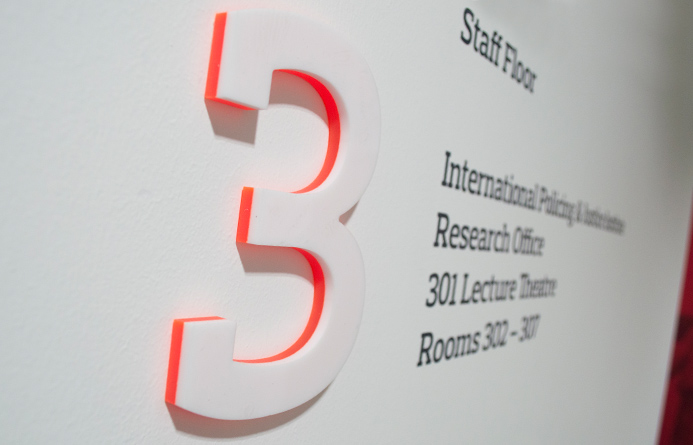A nasty signage accident in Falmouth and new CE manufacturing legislation are causing the industry to evaluate how best to deliver better, safer signage.
The sign industry has been at the forefront of a recent news story when an elderly woman was hit by a poorly fitted shop sign in Falmouth. The impact of the 25kg graphic left the 80-year-old lady with a fractured cheek bone and spinal damage. The story has been reignited not only because the case was due to go to court earlier this month, but also because of the recent introduction of CE marking and compliance. The new CE marking of steel and aluminium signage components became a requirement on 1 July 2014 which allows the product to be legally sold and distributed within the EFTA and European Union by demonstrating that the product complies with the essential requirements and performance levels. There has been some debate about the actual validity of this marking as it does not actually guarantee the quality of the product and the CE marking is assigned to the fabricating company rather than the product itself and this topic continues to cause some controversy.
During the case of the injured woman, it was discovered that the sign was poorly fitted and used inadequate fixings for the flimsy shop frontage. These findings have highlighted the importance of using certified installation operatives when fitting signage and has sparked discussions within the BSGA (British Sign and Graphics Association) as to how the fitting is as important as the manufacture itself.
WE’D LIKE TO SHARE OUR TOP 3 TIPS FOR BETTER SIGNAGE:
1. MAKE SURE IT’S THE RIGHT PRODUCT FOR THE JOB.
We pride ourselves on suggesting the best product for the job even if it’s not what you had in mind. What we recommend will always be a quality solution designed to perform under the conditions and fulfil the requirements. Products that are below par simply won’t stand up the task, leaving you (and your client) with potentially dangerous signage.
2.MAKE SURE IT LOOKS GOOD.
Whilst signage is critical for any successful business, so is the importance of how it looks. Your signage reflects your brand and your message so it’s worth employing a professional designer or agency to design your signage. They will have experience of what works, legible typefaces and colours. Professional designers understand the balance of how much text is too much and what information is necessary.
3.GET IT INSTALLED PROPERLY.
Our team of professional fitting operatives are trained and certified under the Safe Contractors Scheme, IPAF, CSCS, PASMA and Safety Schemes in Procurement. These accreditations ensure that our operatives work to correct health and safety legislation and provides you with reassurance your signage will be installed correctly to a safe and secure standard.

